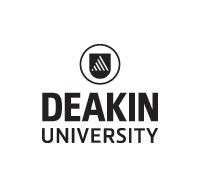AST250 - A History of Australian Football, 1858-2020
Unit details
| Year: | 2024 unit information |
|---|---|
| Enrolment modes: | Trimester 1: Burwood (Melbourne), Waurn Ponds (Geelong), Online |
| Credit point(s): | 1 |
| EFTSL value: | 0.125 |
| Unit Chair: | Trimester 1: Tony Joel |
| Cohort rule: | Nil |
| Prerequisite: | Nil |
| Corequisite: | Nil |
| Incompatible with: | Nil |
| Typical study commitment: | Students will on average spend 150-hours over the trimester undertaking the teaching, learning and assessment activities for this unit. This will include educator guided online learning activities within the unit site. |
| Educator-facilitated (scheduled) learning activities - on-campus unit enrolment: | 1 x 2-hour seminar per week |
| Educator-facilitated (scheduled) learning activities - online unit enrolment: | 1 x 2-hour online seminar per week |
Content
This unit investigates the making and meanings of Australian football over more than 150 years. Students will examine: the game’s origins and codification in Melbourne during the 1850s; how it quickly spread across much of Australia in the nineteenth century; its growing popularity and increasing professionalisation throughout the twentieth century; and the emergence of the “football industry” in the twenty-first century. The grassroots level features at various stages, but the unit mostly focuses on football at the elite level by tracing the Australian Football League’s evolution from a suburban-based amateur competition exclusively based in Victoria through to becoming a billion-dollar enterprise with clubs based across the nation. The unit uses case studies to probe the role of football clubs in their local communities. It explores the emotional and cultural significance of “footy” to spectators and fans, and their changing relationship to the game through sports media. It considers the emergence of women’s football and women occupying off-field leadership roles. The unit also inspects the complex relationship shared between Indigenous Australians and Australia’s indigenous game, ranging from early participation through to recent racism controversies and attempts to promote reconciliation.
| ULO | These are the Learning Outcomes (ULO) for this unit. At the completion of this unit, successful students can: | Deakin Graduate Learning Outcomes |
|---|---|---|
| ULO1 | Build and apply in-depth historical knowledge and understanding of the role Australian football has played in society from the game’s origins in the 1850s through to the twenty-first century. | GLO1: Discipline-specific knowledge and capabilities |
| ULO2 | Conduct independent research and evaluate in a reflective and critical manner Australian football’s social, cultural, political, and/or economic impact throughout history, and clearly and concisely present their findings in a non-text-based media format. | GLO1: Discipline-specific knowledge and capabilities GLO3: Digital literacy GLO4: Critical thinking |
| ULO3 | Critically analyse policy documents and relevant historical sources, and then utilise problem-solving skills to create solutions to authentic problems. | GLO1: Discipline-specific knowledge and capabilities GLO5: Problem solving |
These Unit Learning Outcomes are applicable for all teaching periods throughout the year.
Assessment
| Assessment Description | Student output | Grading and weighting (% total mark for unit) | Indicative due week |
|---|---|---|---|
| Assessment 1 - Quiz | 800 words or equivalent | 20% | Weeks 1-4 |
| Assessment 2 - Presentation | 1600 words or equivalent | 40% | Weeks 7 |
| Assessment 3 - Report | 1600 words or equivalent | 40% | Weeks 11 |
The assessment due weeks provided may change. The Unit Chair will clarify the exact assessment requirements, including the due date, at the start of the teaching period.
Learning Resource
The texts and reading list for the unit can be found on the University Library via the link AST250
Note: Select the relevant trimester reading list. Please note that a future teaching period's reading list may not be available until a month prior to the start of that teaching period so you may wish to use the relevant trimester's prior year reading list as a guide only.
Unit Fee Information
Fees and charges vary depending on the type of fee place you hold, your course, your commencement year, the units you choose to study and their study discipline, and your study load.
Tuition fees increase at the beginning of each calendar year and all fees quoted are in Australian dollars ($AUD). Tuition fees do not include textbooks, computer equipment or software, other equipment or costs such as mandatory checks, travel and stationery.
Use the Fee estimator to see course and unit fees applicable to your course and type of place.
For further information regarding tuition fees, other fees and charges, invoice due dates, withdrawal dates, payment methods visit our Current Students website.
